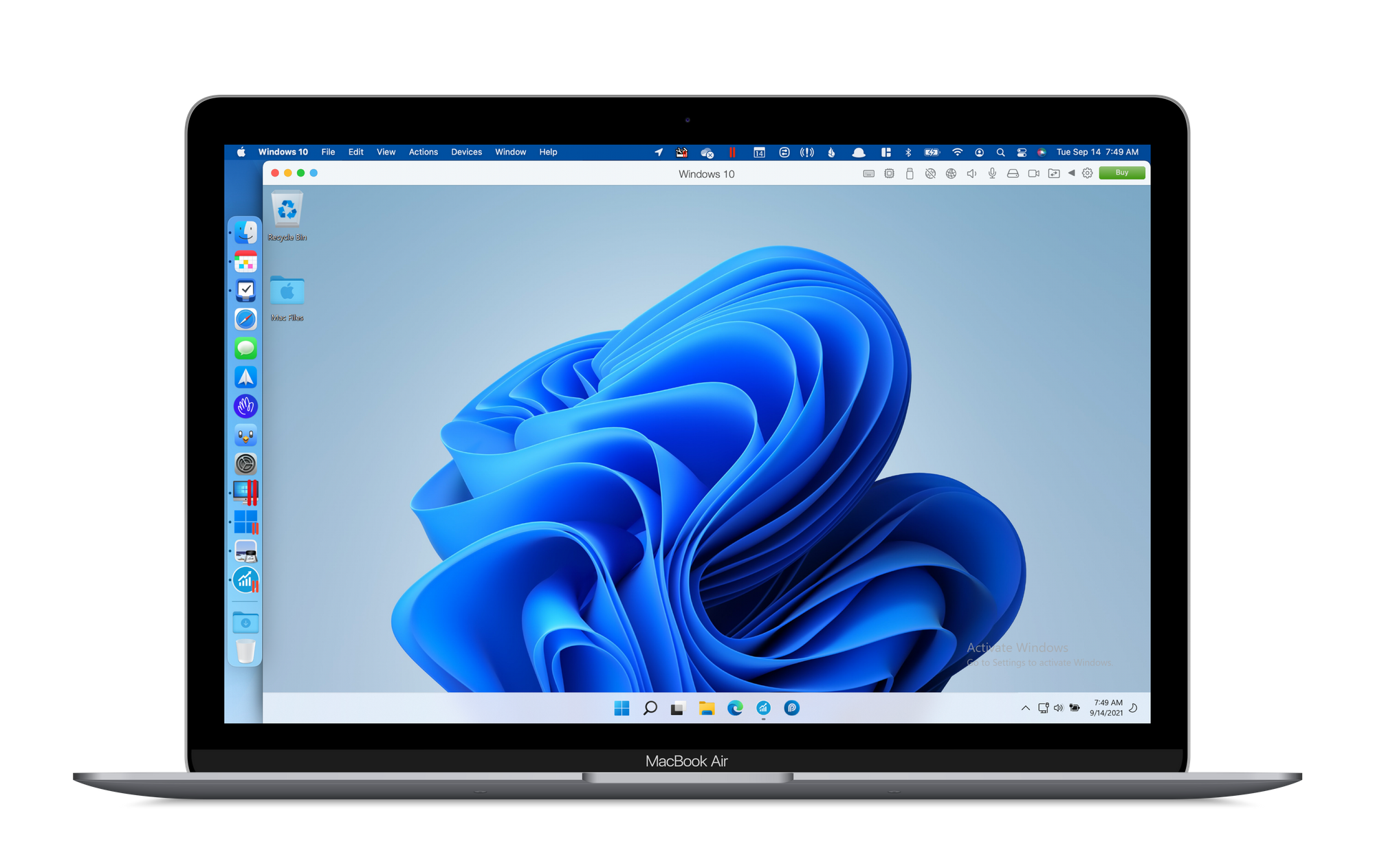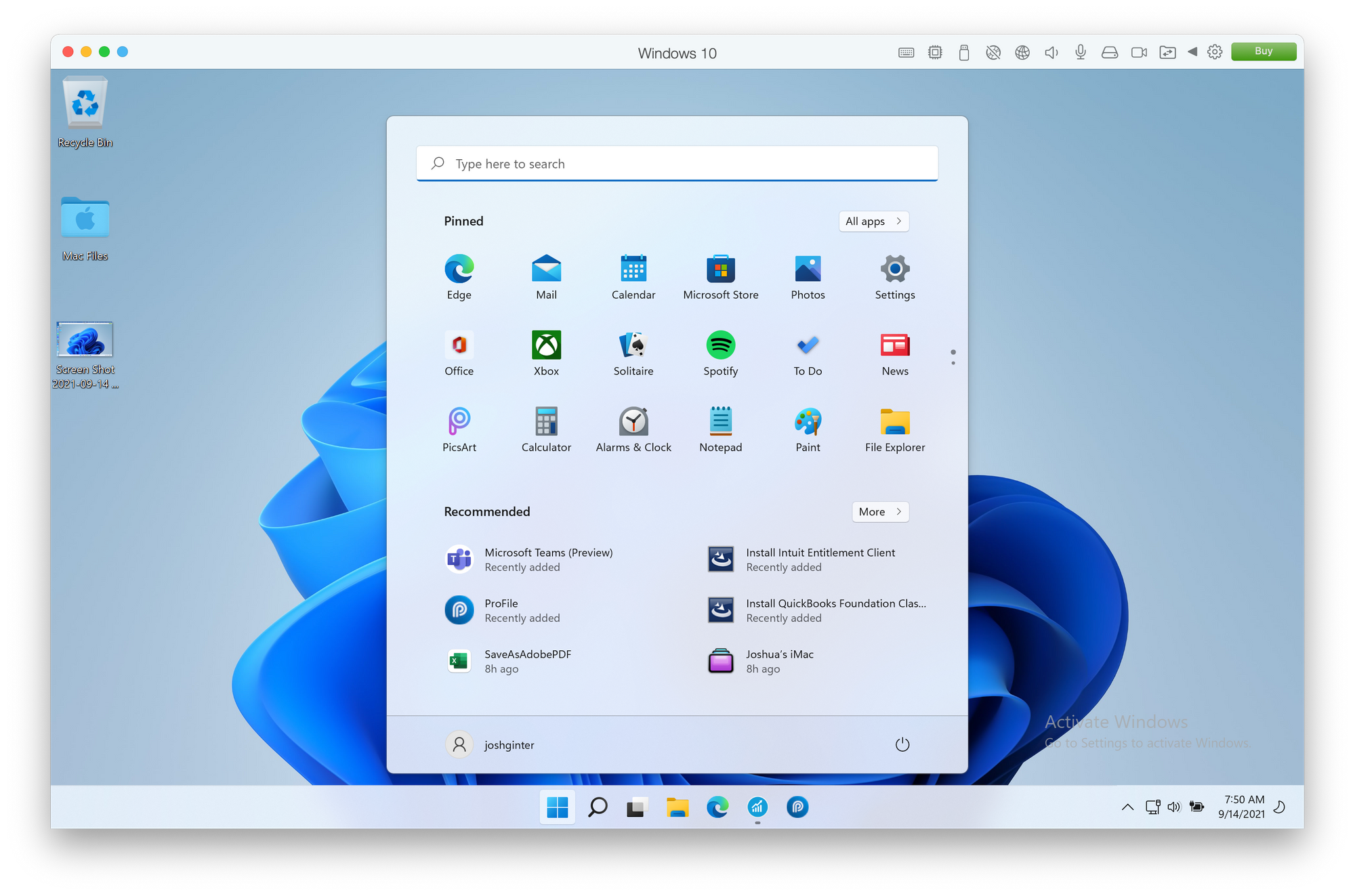
The above title was sort of difficult to write — I attempted to shorten it up, but “Running All the Betas” didn’t really feel like cutting it to me.
Two things came up over the weekend:
- The realization that a laptop is probably the ultimate computer option — I’d like to be home for suppers with my family during tax season and, though I could go back to the office after that, I think I’d prefer to work from home (from here). A laptop would allow a transfer of work from office to home.
- The realization that the M1 MacBook Air could maybe actually fit #1’s needs — I have been hesitant to break any operating office workflow, especially when I hear the words “ARM processor” or “Insider Preview”.
But a good friend gave me the push over the cliff to do some testing.
And yesterday, I tested.
The ultimate question was “Could the M1 MacBook Air running a Windows 10 ARM virtual machine in Parallels run apps like Quickbooks, Sage 50, and Intuit’s ProFile tax software?”
ProFile is a hog. It eats RAM, especially when you have an entire family’s set of tax returns open. I’ve had 32GB of RAM eaten up in 5 tax returns.
ProFile is also a monolithic, DOS-like program that looks like it comes from the 1980s. Sometimes I wonder how this kind of software still exists.
(It should exist though! ProFile works very well for our needs. It just takes a beefy computer to do it.)
Because of ProFile’s hardware needs, I’ve experimented over the last five or six months on moving formerly PC-only workflows onto a 2019 27-inch iMac. The iMac is decked out with 24GB RAM, 512GB SSD, and a six-core processor. Even with this kind of hardware, ProFile can dwindle the virtual machine down to nothing. I’ve skewed most of Parallel’s hardware controls towards the Windows 10 virtual machine.
Given that experience, I didn’t believe an M1 MacBook Air would meet my needs. That the MacBook Air would have to run an ARM version of Windows also gave me great pause.

After a day of testing yesterday, I am happy to report the M1 MacBook Air passed with flying colours. After some fan-dangling to download the Windows 11 Insider Preview ISO file (the Windows 10 file has been discontinued and you can only download the file on a Windows machine), I was able to install Parallels 17, then Windows 11, then Sage 50 and ProFile, and then test everything. I did this all within three hours of work.
The Parallels/Windows 11 virtual machine takes about 35GB of storage space. I have 6GB RAM (of 16GB RAM total) and 4 CPUs dedicated to macOS, with the remainder of the M1 MacBook Air’s hardware dedicated to Parallels and Windows 11. This is the default and it has worked well so far.
Apps open quicker than the 2019 iMac. Transitions between apps works great. Actual app performance — specifically ProFile — is better than any previous experience I’ve had with any accounting software in the past. (Note, though, that I haven’t yet opened five tax returns at once in ProFile and worked through them.)
The only hiccup so far has been our office’s PDF editor of choice — Foxit PhantomPDF only works with an Intel chip.
All of this is to say: Running all the betas on an M1 MacBook Air has exceeded my expectations. It’s completely blown me away. I may be able to use this little 2020 M1 MacBook Air for all my work — writing, The Sweet Setup, and accounting. It has a great keyboard. It has tremendous battery life. It is so thin and light, I can barely notice it in my bag.
And it’s the cheapest laptop Apple sells.
I continue to be impressed with this incredible notebook. I hope the M1X MacBook Pros are priced out of my range so I don’t look at their product pages endlessly.